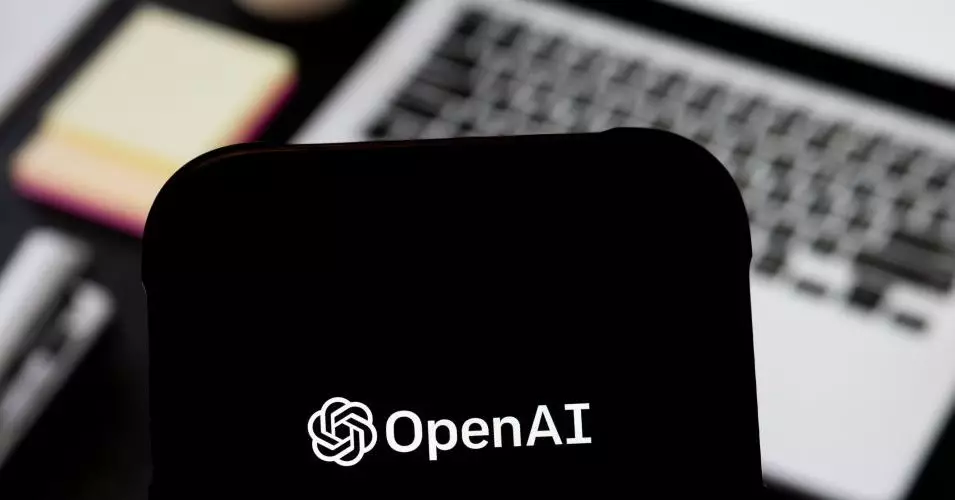In a momentous announcement today, Sam Altman, the CEO of OpenAI, shared that the organization plans to release an open-weight artificial intelligence model within the next few months. This revelation is more than just another development; it signifies a pivotal shift in the dynamics of AI analytics and access. OpenAI’s decision is partly driven by the impressive reception of the R1 model by the Chinese firm DeepSeek, as well as the rising popularity of Meta’s Llama models. Altman’s recognition of being “on the wrong side of history” indicates that OpenAI has been reevaluating its strategies amidst competitive tides in the AI landscape.
The concept of open-weight models is not merely a technical alteration but a philosophy that embodies transparency and accessibility. By granting developers the ability to access the internal workings of these models, OpenAI is challenging the traditional notion of proprietary AI technologies. This approach aligns with a growing consensus in the tech community that democratizing AI can foster innovation and creativity in ways that opaque models cannot.
Competing with Cost Efficiency
A fundamental aspect of OpenAI’s new strategic direction appears to be a focus on cost efficiency. Altman acknowledged that the efficiency of the R1 model, allegedly trained for a fraction of the cost of contemporary large-scale models, has set a new standard. This prompts an essential question: can established firms like OpenAI adapt to compete with newcomers willing to disrupt the status quo? As competition intensifies, the pressure mounts for OpenAI to prove that not only can it create powerful AI but also do so economically.
Clement Delangue, co-founder and CEO of HuggingFace, expressed enthusiasm for this shift, noting the acknowledgment of open weights’ transformative potential. Such endorsements signify a community-wide recognition that the future of AI may hinge on collective learning and improvement rather than the insulated methodologies of the past. Removing barriers to entry and enabling broader participation can lead to unprecedented advancements in AI technology, pushing the capabilities of language models further.
Empowering Developers Through Open Access
OpenAI’s forthcoming open-weight model comes with promises of accessibility and empowerment. Developers can look forward to run the upcoming model on their hardware, which marks a significant departure from the current cloud-reliant offerings. This flexibility allows greater customization of applications, particularly in sensitive sectors where data security is paramount. The traditional reliance on proprietary systems has often alienated smaller developers and researchers, thus perpetuating a cycle of inequality in the AI field.
Moreover, OpenAI is committing to transparency in its development practices. The call for early registrations from developers for a sneak peek of the model suggests an inviting approach. Hosting targeted events to engage with these early adopters signals an earnest attempt to cultivate a collaborative ecosystem. This not only improves product quality through feedback loops but also elevates community investment in the technology’s growth.
Navigating Ethical Pitfalls and Security Challenges
However, the embrace of open-weight models is not without its challenges. Experts like Johannes Heidecke at OpenAI have voiced concerns regarding potential misuse of accessible AI capabilities. The fear of cybercriminals exploiting open-source technologies for malicious purposes looms large, creating a complex dilemma. Striking a balance between accessibility and security will be crucial as OpenAI moves forward.
While some researchers argue that the potential for abuse cannot be ignored, others contend that the benefits of open models outweigh the risks when managed appropriately. The Preparedness Framework that OpenAI strives to adhere to exemplifies a responsible mindset in navigating the uncertainties of developmental AI. Such frameworks are essential to ensuring that AI advancements propagate societal benefits without unintentionally facilitating harm.
OpenAI’s announcement has sparked discussions among the tech community about the importance and implications of transparency in AI development. However, skepticism remains regarding whether all participants in this evolving landscape will genuinely prioritize ethical practices over profit motives, an aspect that merits vigilance as open-weight models gain traction.
In this exhilarating era of AI innovation, OpenAI’s bold transition toward open-weight models could foster unprecedented opportunities for developers and researchers alike. The implications of this strategic shift promise to redefine not just OpenAI’s trajectory but the larger narrative of AI advancement, encouraging the community to work collectively toward a more inclusive and innovative future.

